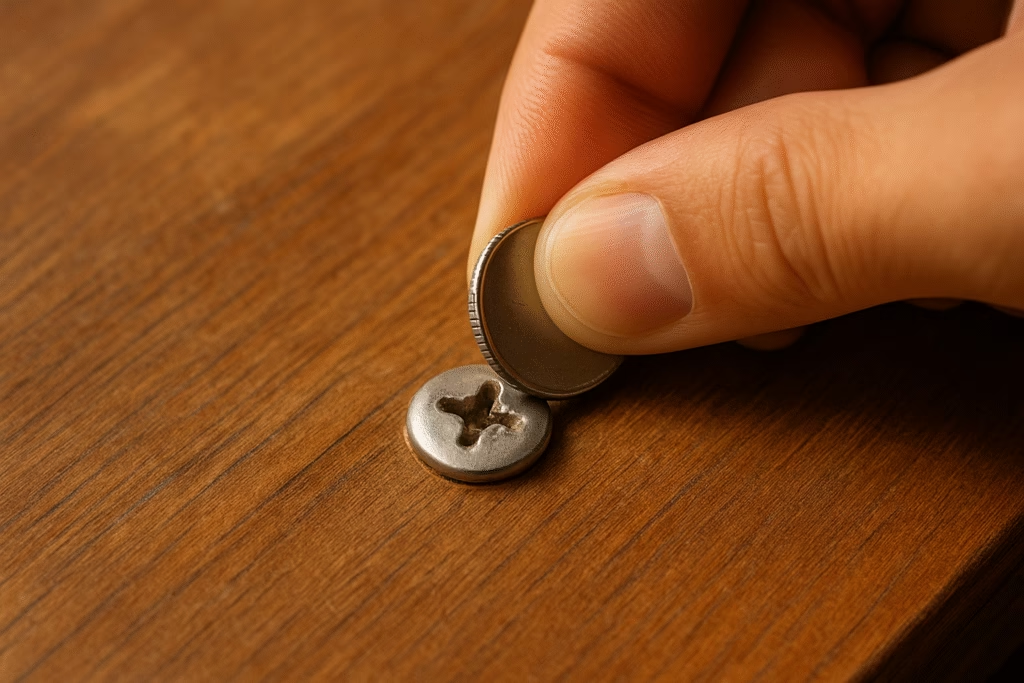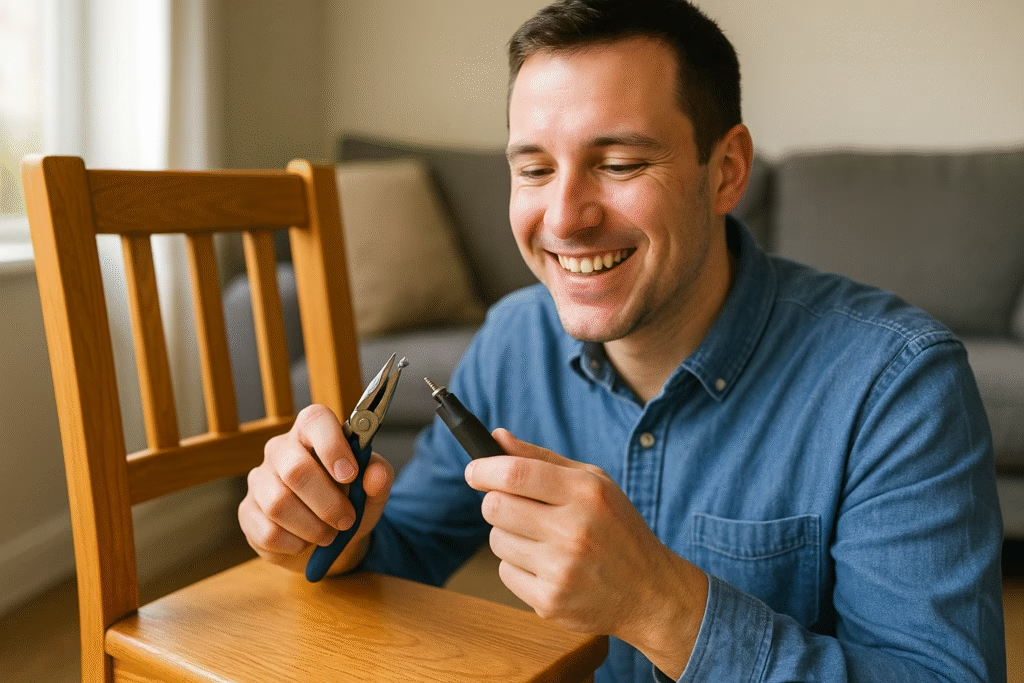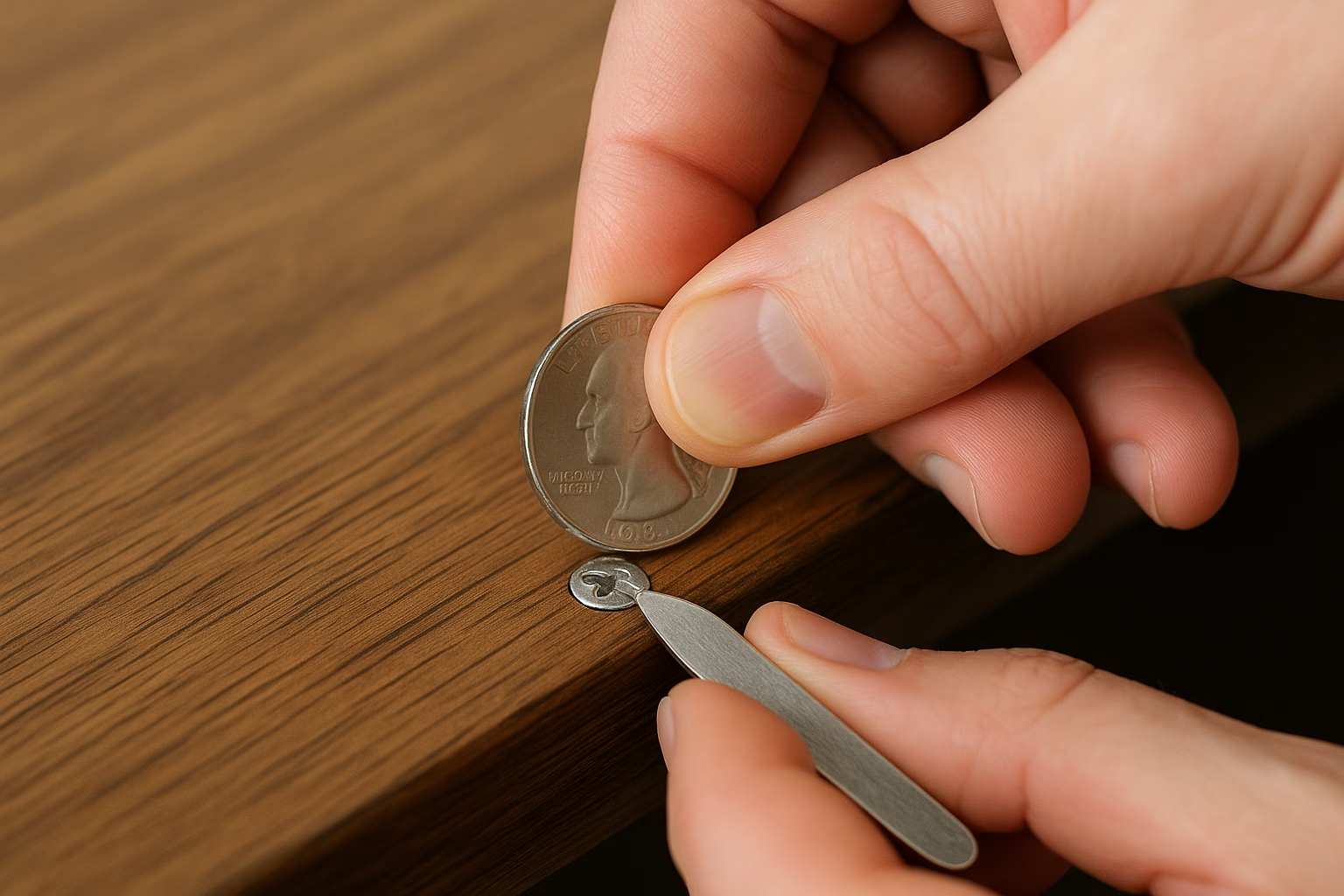Introduction
At some point, almost every DIY enthusiast or homeowner encounters the challenge of needing to take out a screw but realizing there isn’t a screwdriver nearby. Whether you’re in the middle of a quick repair, working outdoors, or simply misplaced your tools, knowing how to remove a screw without a screwdriver can save time and frustration. Fortunately, there are several practical methods that make use of common household items, allowing you to complete the task safely without waiting until you find the proper tool.
Screws are designed to be tightened and loosened using specific screwdrivers, but in urgent situations, improvisation becomes the key. Understanding how to remove a screw without a screwdriver doesn’t just help in emergencies—it also develops resourcefulness and problem-solving skills that come in handy in many DIY projects. From coins and butter knives to pliers and even sturdy fingernails for very loose screws, there are plenty of items that can provide enough leverage to turn the screw effectively.
The main challenge comes when the screw is tightly fastened or partially stripped. In such cases, having a step-by-step strategy makes all the difference. Simply forcing objects into the screw head can cause more damage or injury if not done carefully. That’s why it’s important to learn not only which items can substitute for screwdrivers but also how to apply pressure and maintain control while turning the screw. By doing so, you ensure both efficiency and safety in the process.
In this guide, you’ll learn why people often find themselves needing alternative methods, the most common mistakes to avoid, and a detailed process that outlines how to use everyday objects to achieve the same results as a screwdriver. You’ll also find answers to frequently asked questions and practical prevention tips to avoid getting stuck again in the future. By the end, you’ll know exactly how to remove a screw without a screwdriver using safe and reliable methods that anyone can perform at home.
Why You Might Need to Remove a Screw Without a Screwdriver
There are countless scenarios where learning how to remove a screw without a screwdriver becomes an unexpectedly valuable skill. Imagine working on a quick household repair, only to discover your screwdriver set is missing, or being outdoors at a campsite and finding a screw that needs loosening on a piece of gear. In these situations, improvisation isn’t just helpful—it’s often the only way to get the job done.
One of the most common reasons is simple convenience. Tools often get misplaced, and rather than abandoning a project to buy a replacement, knowing alternative methods saves time. Additionally, some people may not own a full set of tools, especially if they’re just moving into a new home or working in a temporary space. In these cases, learning how to remove a screw without a screwdriver is not just a workaround but a necessity.
Another situation arises when screws become stripped or worn. Even if you do have the right screwdriver, the damaged screw head may no longer provide enough grip for traditional tools. Improvised solutions such as pliers, rubber bands, or even household coins can provide the extra friction and leverage needed to twist out the screw. This makes knowing how to remove a screw without a screwdriver a practical backup plan, even for people who have toolkits.
Emergencies also highlight the importance of this skill. If you’re handling furniture assembly, repairing electronics, or adjusting appliances, waiting for the right tool isn’t always an option. By using everyday items to loosen screws, you can solve problems on the spot. Whether it’s adjusting a loose cupboard handle or removing a battery cover on a device, creativity often becomes the best tool you have available.
In short, learning how to remove a screw without a screwdriver prepares you for convenience, emergencies, and problem-solving when traditional methods fail. It’s about turning ordinary objects into effective tools and boosting your confidence in tackling minor repairs without being held back by missing equipment.
Common Mistakes When Trying to Remove a Screw Without a Screwdriver
While it’s possible to learn how to remove a screw without a screwdriver, many people make mistakes that cause damage or even injury. One of the most frequent errors is using too much force with the wrong object. For example, jamming scissors or knives into the screw head without control often results in slipping and scratched surfaces—or worse, cuts to your hands. Improvisation requires caution, not brute strength.

Another mistake is choosing tools that are too soft or weak to handle the job. Coins, for example, work well for large flathead screws but will bend easily if forced into smaller or tighter screws. Similarly, flimsy plastic items may snap, leaving pieces stuck in the screw head. Understanding which household items are sturdy enough for the task is essential when figuring out how to remove a screw without a screwdriver.
Many people also forget about grip. Simply pressing an item into the screw without stabilizing the screw head can lead to stripping. Once the grooves of the screw are damaged, it becomes significantly harder to remove, even with the correct tool later. To avoid this, always apply steady, even pressure and ensure the item you’re using fits the screw head as snugly as possible.
Lastly, some users skip the preparation stage. Dust, rust, or paint buildup around the screw can make removal much harder. Trying to force a screw out without clearing the surrounding area first often leads to more frustration. Simple steps like cleaning the area or adding a drop of oil can make a huge difference. When learning how to remove a screw without a screwdriver, avoiding these mistakes ensures both safety and success.
Step-by-Step Guide: How to Remove a Screw Without a Screwdriver
Step 1: Use Household Items as Temporary Tools
The first and most practical method in learning how to remove a screw without a screwdriver is identifying everyday objects that can act as substitutes. Flathead screws, for example, can often be turned using a coin such as a nickel or quarter, which fits neatly into the slot and provides enough leverage for loosening. A sturdy butter knife or metal nail file also works well when carefully pressed into the screw head and twisted with steady pressure.
For Phillips screws, items like small scissors, tweezers, or even a metal fork tine can provide grip on the cross-shaped slot. Keys can also be effective, especially for medium-sized screws, as their edges are strong enough to handle resistance. The important factor here is choosing objects that are durable and fit snugly into the screw head without slipping.
Pliers are another versatile option. If the screw protrudes slightly above the surface, gripping it tightly with pliers allows you to turn it counterclockwise until it loosens. This method is particularly useful for stripped screws where traditional turning methods fail. By experimenting with different items and matching them to the screw type, you can almost always find a way to remove the screw safely.
The key to success in this step is patience. Avoid forcing items that don’t fit well, as this can damage both the tool and the screw. By starting with the most logical household substitutes, you can quickly figure out how to remove a screw without a screwdriver using minimal effort.
Step 2: Improve Grip on Stuck or Stripped Screws
Sometimes the challenge isn’t a missing screwdriver but a stubborn screw that refuses to turn. In such cases, enhancing grip becomes the priority. One clever trick for learning how to remove a screw without a screwdriver is placing a rubber band over the screw head before pressing your chosen tool into it. The rubber fills gaps in stripped or worn grooves, providing extra friction that allows the screw to turn.
If pliers are available, gripping the screw head from the sides often works when other methods fail. Apply steady, even pressure rather than quick jerks to avoid snapping the screw. For screws partially buried in wood or metal, applying penetrating oil around the edges can loosen rust and debris, making it easier to turn. In more stubborn cases, gently tapping the screw head with a hammer and a flat tool can help break its grip before attempting removal.
Household hacks like using sandpaper between your improvised tool and the screw can also provide added traction. The rough surface prevents slipping, especially when working with smooth coins or keys. With persistence and creativity, even screws that seem impossible to remove can eventually be freed. These strategies emphasize control and precision, which are essential when you want to learn how to remove a screw without a screwdriver safely.
Step 3: Apply Safe Force and Test Removal
Once you’ve chosen your improvised tool and improved grip, the final step in how to remove a screw without a screwdriver is applying force correctly. Always turn counterclockwise when loosening a screw, keeping your motions steady and controlled. Avoid sudden twists, which increase the chance of slipping or damaging the screw head further. Slow, even pressure works best, especially when using items not designed for the task.
If resistance is high, alternate between loosening slightly and tightening slightly before trying again. This rocking motion helps break the screw free. For especially tight screws, a gentle tap on the tool while applying turning pressure can create enough momentum to release the grip. Testing progress frequently ensures you don’t overstrain either the tool or the surrounding surface.
Once the screw begins to move, continue applying consistent pressure until it is fully removed. Celebrate small progress, as each quarter turn is a step toward success. The key is combining patience, proper technique, and safety. By completing this step carefully, you’ll have successfully learned how to remove a screw without a screwdriver without risking damage to yourself or your project.
FAQs About How to Remove a Screw Without a Screwdriver
Can I use a coin to remove a screw?
Yes, coins like nickels or quarters can be used for flathead screws. They work particularly well for medium or large screws that aren’t tightly fastened. This simple trick is one of the most popular ways to learn how to remove a screw without a screwdriver. Just be careful not to bend the coin or slip, which can damage the screw head.
What if the screw is stripped?
Stripped screws are harder to deal with, but not impossible. Rubber bands, pliers, or sandpaper can provide the extra grip needed. In some cases, applying a bit of oil or gently tapping the screw head can also help. These techniques are essential when figuring out how to remove a screw without a screwdriver and a stripped head makes things more difficult.
Is it safe to use knives or scissors as screwdrivers?
While knives or scissors can sometimes substitute, they are risky because they can slip and cause injury. If you must use them, apply slow, steady pressure and keep your fingers away from the blade. Whenever possible, opt for safer alternatives like coins, pliers, or sturdy keys when you need to remove a screw without a screwdriver.
Can I damage furniture or surfaces by using improvised tools?
Yes, improper use of household items can scratch or dent surfaces. To avoid this, place a cloth around the screw area or use tools with smooth edges. Being careful and deliberate ensures that when you learn how to remove a screw without a screwdriver, you protect both the screw and the surface around it.
What’s the best way to prevent getting stuck without a screwdriver again?
The simplest prevention is keeping a basic toolkit at home, in your car, or workspace. A set of multi-bit screwdrivers ensures you’ll always have the right tool handy. Still, knowing how to remove a screw without a screwdriver prepares you for unexpected situations where tools aren’t available, making it a useful skill regardless.
Conclusion
Learning how to remove a screw without a screwdriver is all about resourcefulness, creativity, and patience. Whether you use a coin, pliers, or another household object, the goal is to apply steady, controlled pressure until the screw turns. By avoiding common mistakes such as forcing weak tools or rushing the process, you ensure both your safety and the integrity of the project you’re working on.

The methods described here—using everyday items, improving grip, and applying controlled force—cover most situations where a screwdriver isn’t available. In emergencies or simple household fixes, these techniques can save time and prevent frustration. They also highlight the importance of thinking outside the box when faced with common DIY challenges.
Of course, having a proper screwdriver set is always best. But even when tools aren’t available, knowing how to remove a screw without a screwdriver gives you the confidence to handle unexpected situations. With a few smart tricks, you can overcome obstacles and continue your work without delays.
📌 Read Similar Topics
For more DIY problem-solving tips, check out:
Family Handyman: Remove Stripped Screws,
Lowe’s Screw Guide, and
Wikipedia: Screw.
Share this:
- Click to share on Facebook (Opens in new window) Facebook
- Click to share on X (Opens in new window) X
- Click to share on LinkedIn (Opens in new window) LinkedIn
- Click to share on Reddit (Opens in new window) Reddit
- Click to share on X (Opens in new window) X
- Click to share on Threads (Opens in new window) Threads
- Click to share on WhatsApp (Opens in new window) WhatsApp





Pingback: Stripped Screw Hole Fix – Proven Powerful Repair Guide